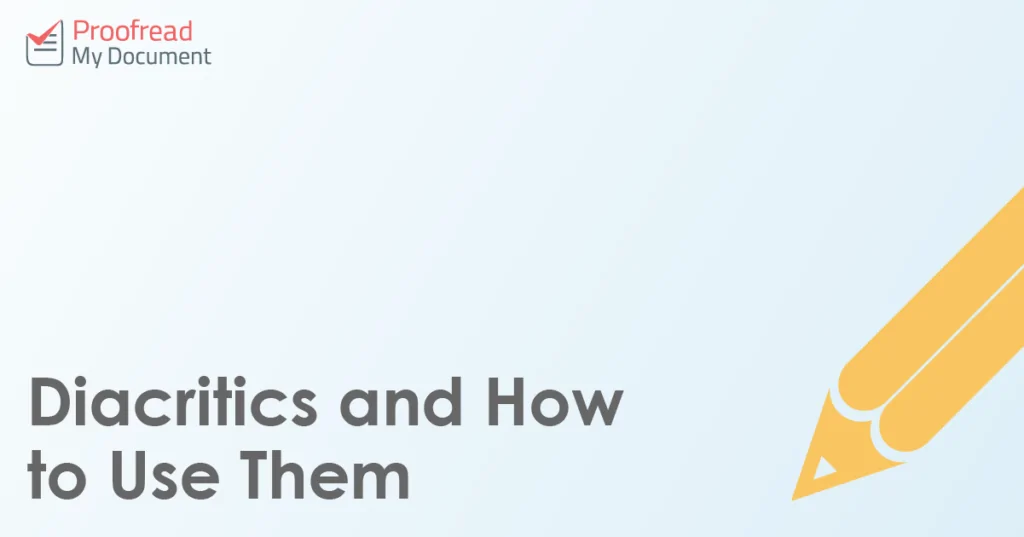Maybe you’ve heard people refer to ‘accents’ when writing certain words. Or maybe you’ve just noticed the marks above letters in some words. If these seem mysterious to you, you’re in the right place! That’s because we’re looking at how to use diacritics correctly.
What Are Diacritics?
A diacritic is a mark that shows how a word is pronounced. We don’t use them in English often, but you will see them in words borrowed from languages such as French and Spanish.
A few common diacritics you might have seen include the following:
- Acute ( ´ ) and grave ( ` ) accents modify vowels or indicate stress in a word.
- The circumflex ( ˆ ) shows that an ‘s’ has been left out of a word.
- A cedilla ( ¸ ) goes under a ‘c’ to show that it is pronounced as an ‘s’.
- The tilde ( ~ ) goes over an ‘n’ to indicate pronunciation (this is a separate letter in Spanish).
- In German, the umlaut ( ¨ ) changes the sound of vowels. In English, the same mark is known as a diaeresis and shows that a vowel is pronounced as a separate syllable.
Informally, all of these marks are often called ‘accents’, but technically this only applies to a few marks (e.g. the acute and grave accents). All of them are diacritics, though, so this is the best term to use for these marks.
When to Use Them
As mentioned above, we don’t typically use diacritics in English words. But we do use them in non-English loanwords. These include terms such as ‘jalapeño’ or ‘café’, which were originally borrowed from other languages but are now common in English.
Some loanwords have been anglicised and can now be written with or without the diacritics (e.g. ‘jalapeno’ and ‘cafe’). Some terms have even lost their diacritics completely and are now always written without them in English (e.g. ‘muesli’, which used to be written as ‘müesli’).
Find this useful?
Subscribe to our newsletter and get writing tips from our editors straight to your inbox.

But there are also some words that are conventionally written with diacritics, such as ‘fiancée’ or ‘naïve’. It is usually better to include diacritics in these terms, especially in formal writing. If you are unsure whether to use a diacritic in a term, look it up online or ask a proofreader.
Diacritics in Microsoft Word
But what about the practical side of using diacritics? How does it work when your computer has a keyboard without these symbols? The good news is that Microsoft Word makes this easy.
With many loanwords, the autocorrect function will add diacritics as you type. But for other words, you have a choice between keyboard shortcuts and the Symbol menu. The latter works by:
- Selecting where you want to add a letter using the cursor.
- Going to Insert > Symbols > Symbol on the main ribbon.
- Clicking More Symbols… to open a new dialog box.
- Finding the accented letter required and clicking Insert.

This is a slightly long process for adding a single letter, but Word will add any symbols you use to the quick-access menu (i.e. the symbols available without clicking More Symbols…). This means you can easily add the same letters again should you need to use them more than once.



